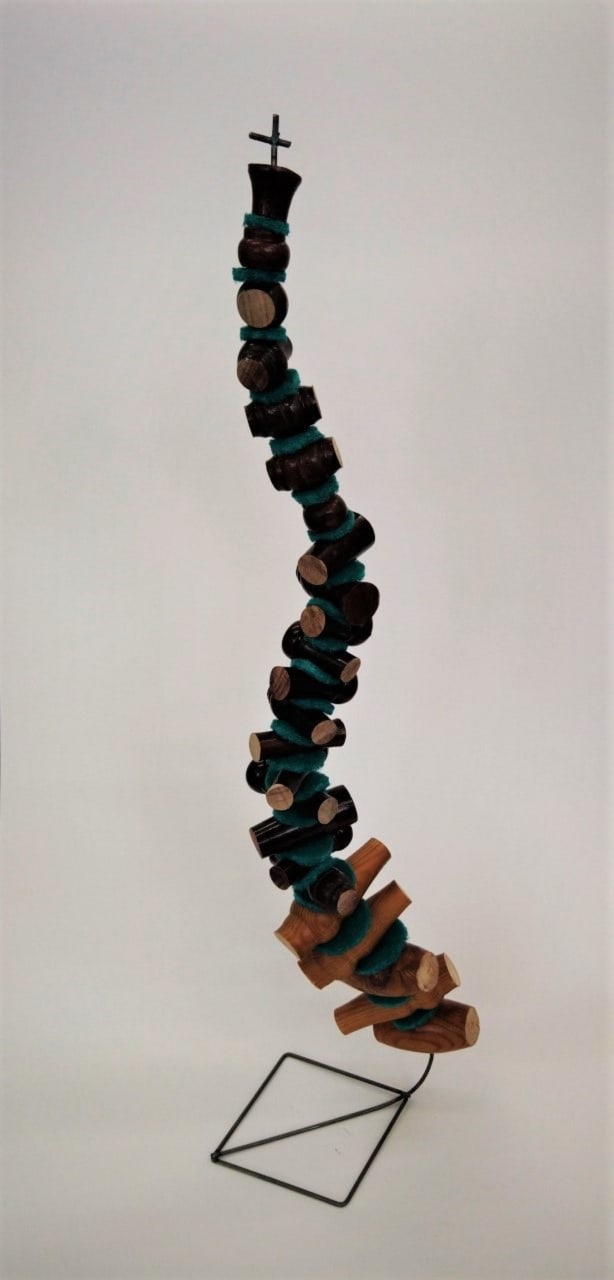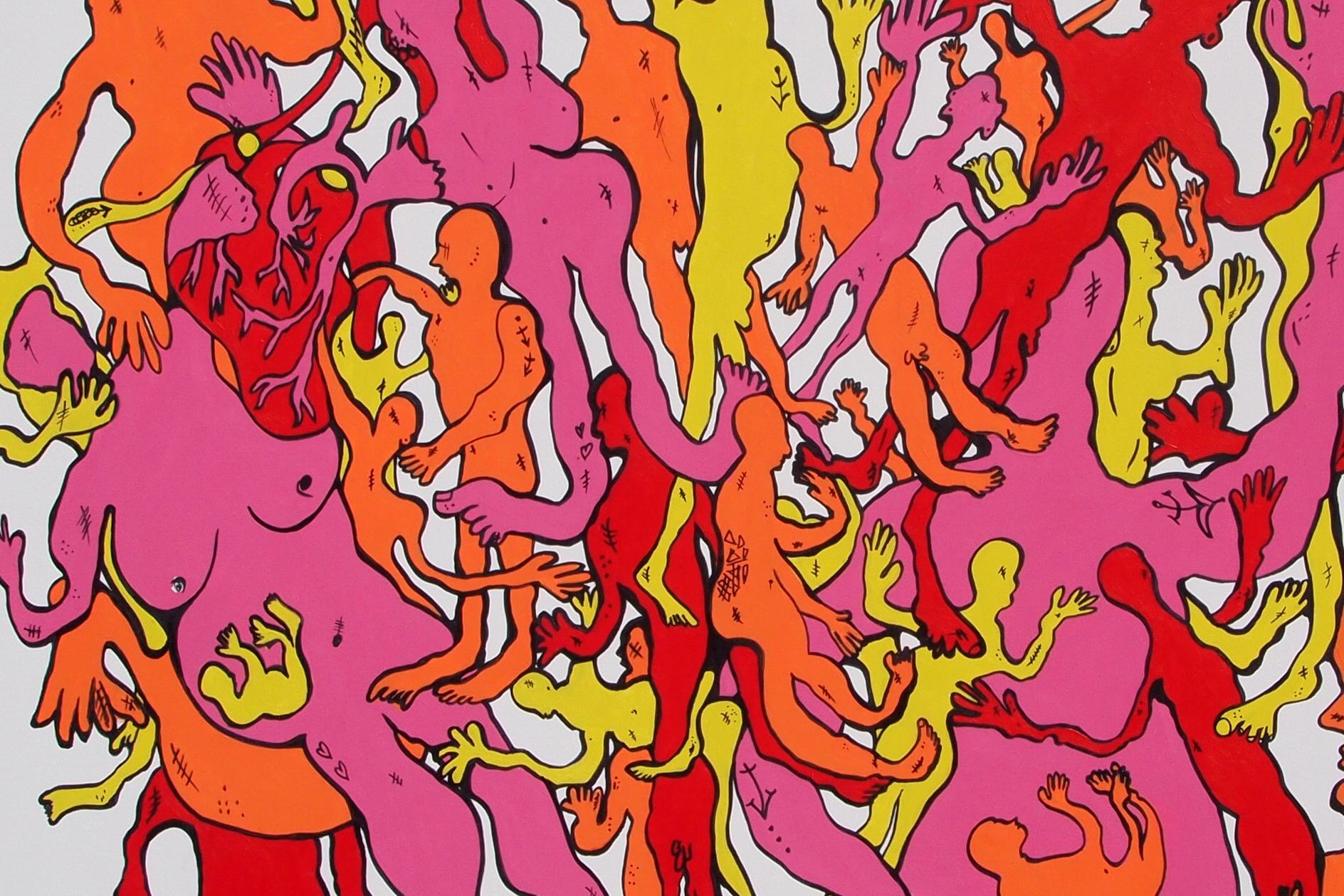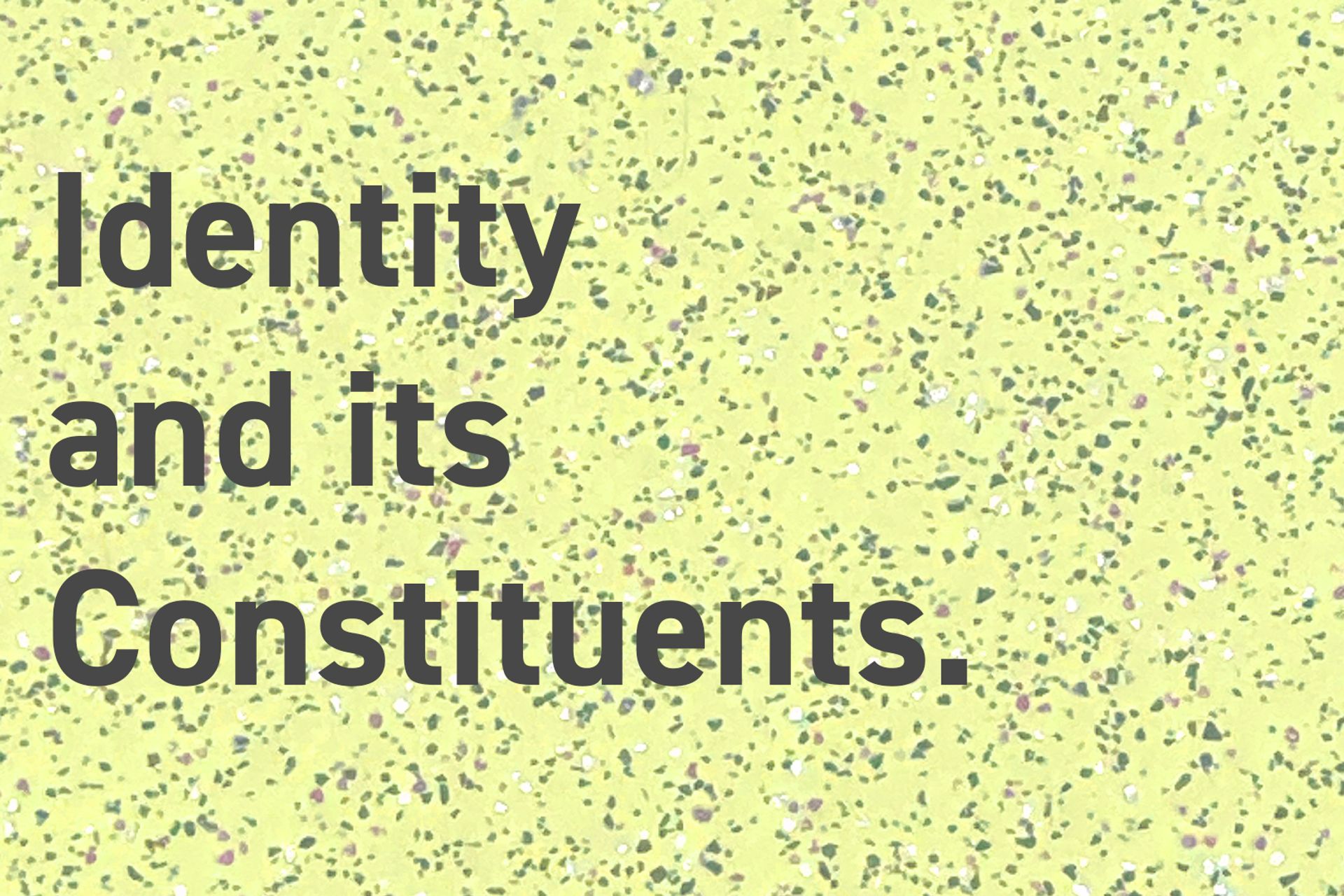I am not alone!! I put a call out on social media asking people to share their body's disruptions, be it by accident, design necessity or vanity and I was inundated. I interviewed 50+ people. So many stories and life journeys. Pictures, tales, text and drawings. The silence was broken and I read that silence halts the mending of our body, as discussed by Bessel Van Der Kolk in his book "The Body Keeps the Score".
A narrative emerged and connections were made. It was not about unburdening, although this played a part, but about triumph and survival. I realised the disruption of the skin, be it by accident, medical necessity, vanity, or to help others, formed a body map – the body as landscape. We are all disrupted from birth with the umbilical cord being cut. Making and talking, making and discussing became a methodology and the work evolved. A collection of bodies, all punctured, became a mirror of global trauma. Lives disrupted in a pandemic, migration and prejudice so prevalent. It speaks of disrupted times and the push and pull of people. The figures in the work are homogenous and heterogenous – alike and yet unique – just as we are. It became a celebration of difference, similarity and connection.
-----------------------------------------
Recipe for Disruption (boy with a bike) 2021
Serve with empathy or “a right telling off”
This is s Springtime recipe for the more culinary adept.
Ingredients
1 x large garden with uneven crazy paving at the end of a cul-de-sac
1 x garden swing and rose bushes
A smattering of garden obstacles
1 x small boy wearing long trousers
1 x chain smoking elderly neighbour
2 x blankets
1 x tub of Hydrophilic polymer and potassium ferrate (commonly known as wound powder)
1 x first aid kit
2 x cups of sweet tea
1 x injection of Lignocaine
1 x Telling off (various alternatives are available)
Utensils
1 x small bike
Roll of black thread
Curved needle
Selection of bandages
Timings
Preparation - Ten minutes to warm up child by vigorously cycling up and down the road
10 seconds for the accident
2 hours resting at the neighbours
3 hours sitting time at the hospital
10 days recovery
14 days after making stitch removal
Forever, the scars
Forever, a story to tell
Method
STEP 1 - Heat the child vigorously by cycling around the cul-de-sac until a rosy pink colour. Add a dash of adrenalin and fearlessness. Cycle fast through the gate and bounce over the step. Use corrective leg motions and brakes as required. Tip in fool hardy speed. Add a sprinkle of random garden objects.
STEP 2 - Hit the uneven paving at speed. Separate the child from the bike. Add pain and ripped jeans. Add copious amounts of blood. Dust with tears and fear.
STEP 3 – Raise the child to mix with the chain smoking, old next-door neighbour. Place on a chair and inspect the bake. Add copious amounts of wound powder. Add two cups of sweet tea and a blanket. Wait for two hours until set then transfer to hospital.
STEP 4 – At the hospital inspect and inject with pain relief. Remove unattached skin, Sew the parts together. Bandage and serve.
Serve with
Tenderness and be careful with the bake for the next 10 days as the bake may be fragile.
Notes
This recipe cannot be pre baked and has to be made on the day.
-----------------------------------------
Recipe for Disruption (Tattoo) 2021
Serve with a dollop of attitude.
This is a yearlong recipe for the more adventurous cook.
Ingredients
1 x Pre shaved head at the base using a beard trimmer
1 x Disposable razor
4 x pre-dispersed inks 4 oz bottles
Designs on flash sheets
Box of chemical wipes
Vaseline
Vitamin E
Utensils
Cover bag for your machine, and cover sleeve for your headrest
Tattoo after care antiseptic
Surface disinfectant sterilisation
Tattoo topical antiseptic ointment/cleanser
An autoclave bag
Alcohol prep pads and rubbing alcohol
Medical waste container
Tattoo autoclave (stericlave)
Latex gloves
Cleaning brushes for tubes and tips
Tattoo machine rack
An ultrasonic cleaner and cleaning solution
Germicidal solution to keep equipment sterile
Needle trays
Bandages, wraps, and hospital tape
Sharp pair of stainless steel medical scissors
1 x Tattoo gun and power supply
Foot switch, spring clip cord, and feeler gauge.
3 x disposable needles round liners and magnum or flat shaders
1 x gum shield
A steady hand
Timings
Preparation – 5 minutes
Shaving 5 minutes
Positioning the stencil – 15 minutes
Inking – 2 hours 20 minutes
Apply vitamin E cream every day for 14 days
Scabbing – after two days
Fully healed – around six days
Forever – the tattoo and a story to tell
Method
STEP 1
Agree the design.
Apply gloves.
Tie hair back and shave the back of the head using the disposable razor
Use the antiseptic wipes clean the back of the head
Add a thin layer of petroleum jelly.
Apply the design transfer. A few attempts may be required.
STEP 2
Insert a gum shield – to bit into when pain is intense.
Using the tattoo gun with sterile needles attached tattoo the outline of the design. Change needles as required. Any blood or fluid is wiped away with a sterile, disposable gauze or cloth. Repeat and until completed.
STEP 3
When finished, clean the area once again and keep hair tied up for six days.
STEP 4
Daily - Wash the tattoo with soap and warm water
Apply antibiotic ointment, thick skin cream, or vitamin E oil 2 to 3 times a day for a week.
Serve with
Swagger and a stiff drink to follow.
Notes
This recipe cannot be pre baked and has to be made on the day.




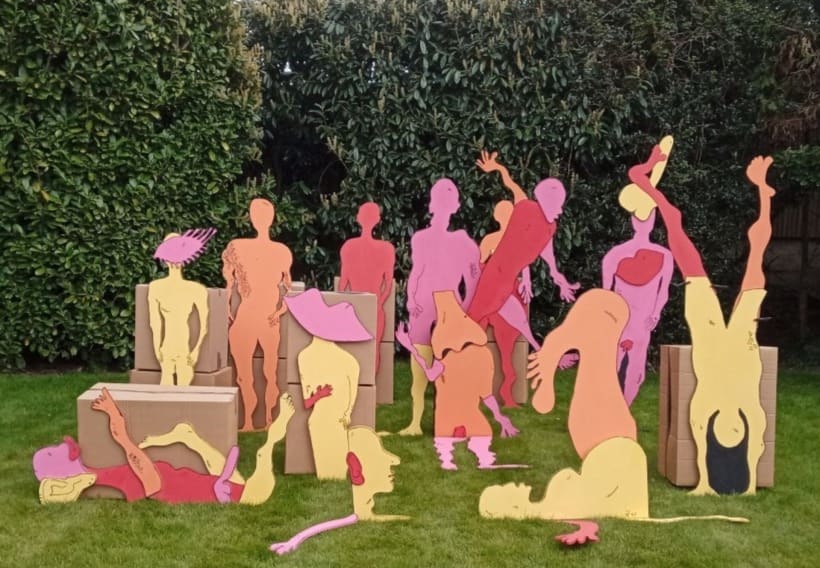

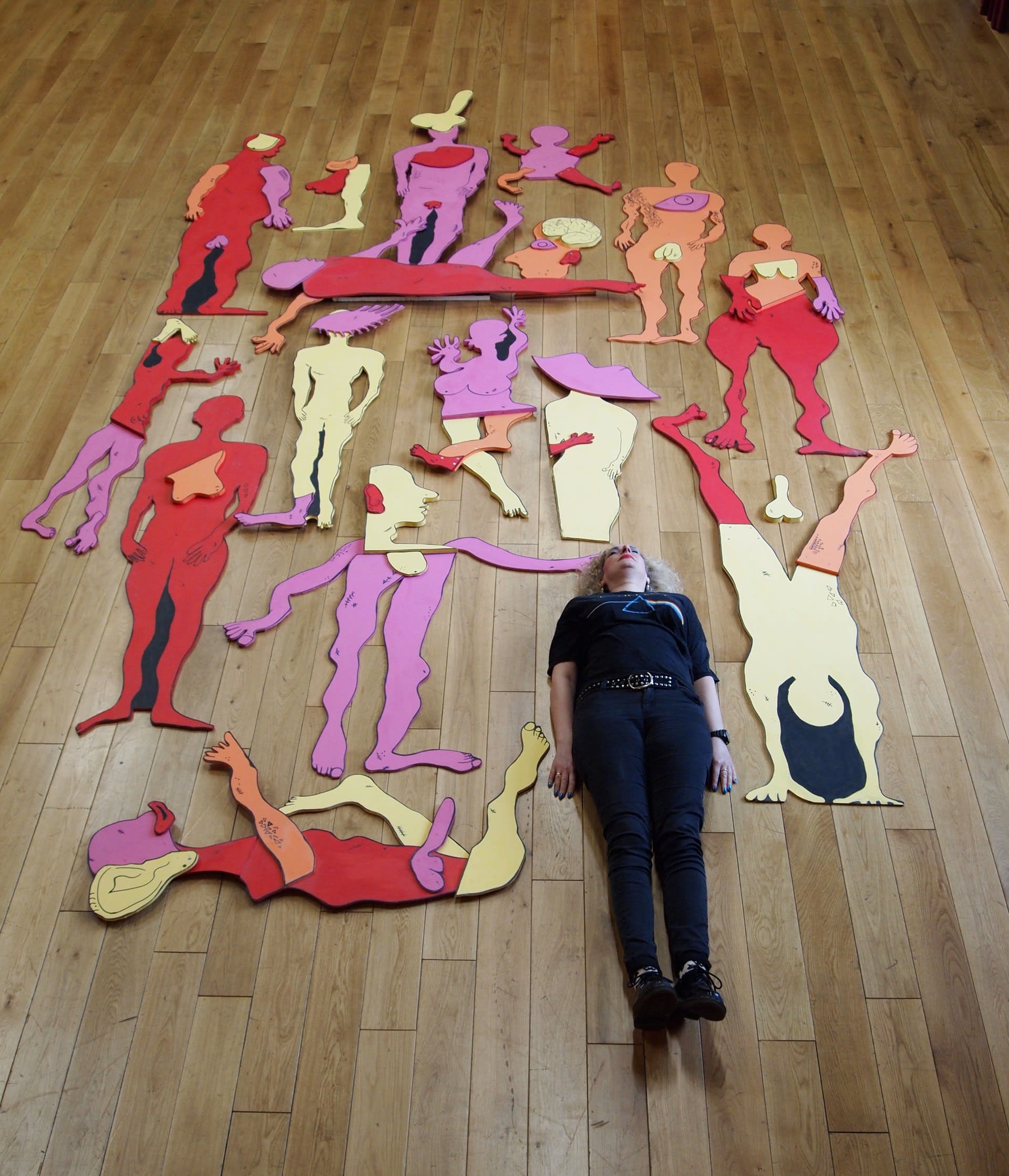



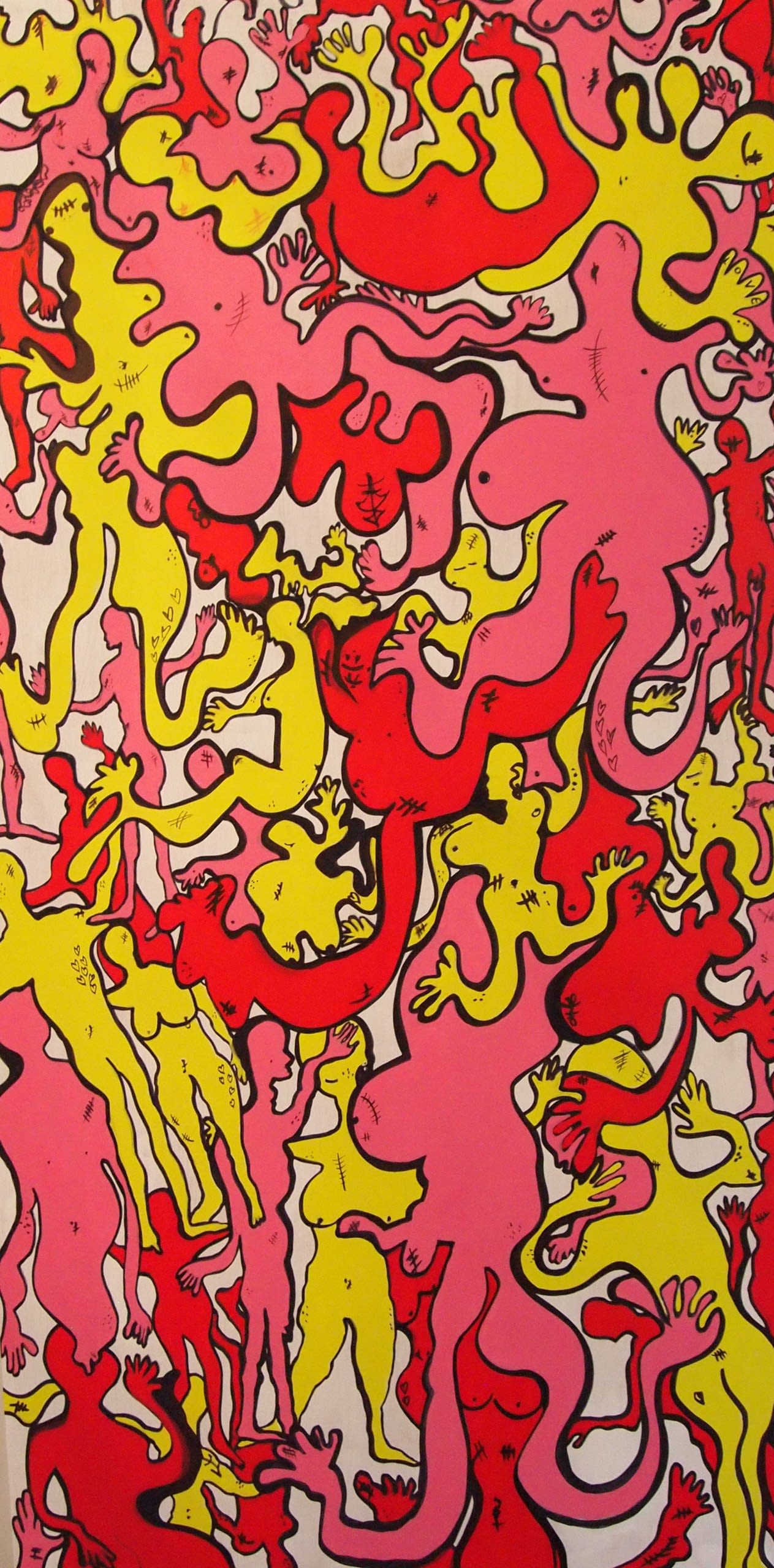



![[untitled]](https://res.cloudinary.com/rca2020/image/upload/f_auto,h_2560,w_1920,c_fill,g_auto,q_auto/v1/rca2021/60ae60db9c31b077aa5875fc-416873?_a=AXAH4S10)
![[untitled]](https://res.cloudinary.com/rca2020/image/upload/f_auto,h_2560,w_1920,c_fill,g_auto,q_auto/v1/rca2021/60ae60db9c31b077aa5875fc-521438?_a=AXAH4S10)
![[untitled]](https://res.cloudinary.com/rca2020/image/upload/f_auto,h_2560,w_1920,c_fill,g_auto,q_auto/v1/rca2021/60ae60db9c31b077aa5875fc-290695?_a=AXAH4S10)
![[untitled]](https://res.cloudinary.com/rca2020/image/upload/f_auto,h_2560,w_1920,c_fill,g_auto,q_auto/v1/rca2021/60ae60db9c31b077aa5875fc-314780?_a=AXAH4S10)
![[untitled]](https://res.cloudinary.com/rca2020/image/upload/f_auto,h_2560,w_1920,c_fill,g_auto,q_auto/v1/rca2021/60ae60db9c31b077aa5875fc-332726?_a=AXAH4S10)
![[untitled]](https://res.cloudinary.com/rca2020/image/upload/f_auto,h_2560,w_1920,c_fill,g_auto,q_auto/v1/rca2021/60ae60db9c31b077aa5875fc-354025?_a=AXAH4S10)
![[untitled]](https://res.cloudinary.com/rca2020/image/upload/f_auto,h_2560,w_1920,c_fill,g_auto,q_auto/v1/rca2021/60ae60db9c31b077aa5875fc-373144?_a=AXAH4S10)
![[untitled]](https://res.cloudinary.com/rca2020/image/upload/f_auto,h_2560,w_1920,c_fill,g_auto,q_auto/v1/rca2021/60ae60db9c31b077aa5875fc-150544?_a=AXAH4S10)
![[untitled]](https://res.cloudinary.com/rca2020/image/upload/f_auto,h_1280,w_1280,c_fill,g_auto,q_auto/v1/rca2021/60ae60db9c31b077aa5875fc-169261?_a=AXAH4S10)



